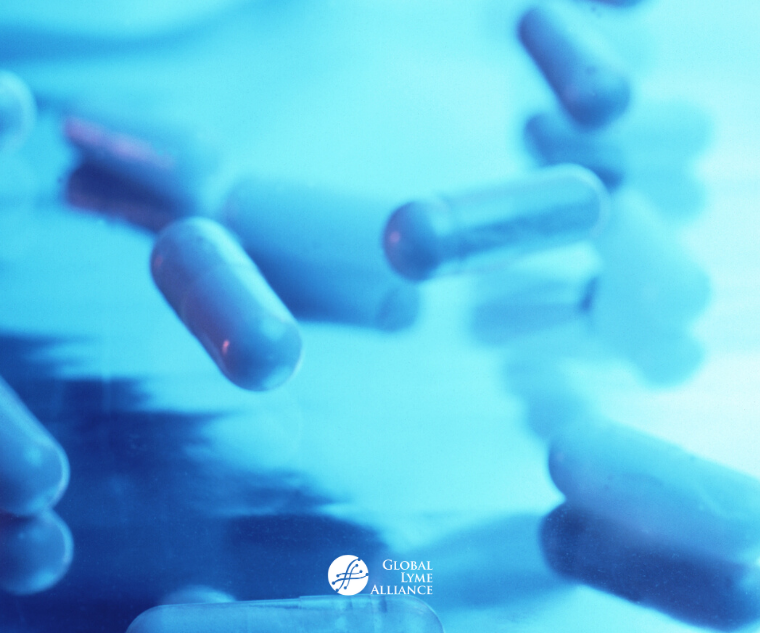
While many bacteria can be treated with antibiotics, it’s not the same for virus infections like COVID-19
by Mayla Hsu, Ph.D., Director of Research and Science, GLA
Why can’t we treat COVID-19 with antibiotics? The disease, which has now caused billions of people to be isolated at home, starts as a mild flu-like illness that is self-limiting in most people, but can be devastating or fatal in others. Without effective treatment or a vaccine, reducing the community burden by closing down all public gatherings and practicing social distancing when we do venture out is one of the few ways to slow down the rate of new infections by SARS-CoV-2, the virus that causes COVID-19 disease.
Treating the sick before advanced disease develops would reduce the need for precious intensive-care hospital beds and ventilators, and keep people alive. A course of outpatient medication, like using antibiotics to treat bacteria, could prevent localized outbreaks from becoming epidemics. But antibiotics aren’t the answer because they don’t work on viruses.
There are key differences between bacteria and viruses as life forms. Bacteria are independent, free-living organisms. When they are given the right growth media that supplies nutrients and energy sources, they can multiply in test tubes or on culture plates. Their DNA encodes the potentially hundreds of proteins they need for growth, survival and replication.
Viruses are much smaller in size and are dependent on other living organisms to survive. They are obligate parasites, which means they must hijack cells in order to survive. In the case of SARS-CoV-2, the viruses stick to cells of the human airway epithelium, infect and then commandeer the cell’s own machinery to manufacture progeny virus particles. After efficiently copying themselves, and often killing the host cell in the process, the new viruses go on to infect neighboring cells.
The genomes of viruses can be made of RNA or DNA, and being much smaller than bacterial genomes, they sometimes encode as little as a handful of proteins. In the early days of virology, biologists debated whether viruses were truly alive, because of their lack of replication in the absence of living cells. Many viruses synchronize their division with cell division, since the host cell’s own functions can be co-opted for virus replication.
Since the virus life cycle is intimately tied to the life of the host cell, antibiotics, which target bacterial components and metabolism alone, are useless for killing them. Antibiotics specifically target bacterial proteins or organelles, the building materials within bacteria, that are absent in viruses. An example is doxycycline, an antibiotic that is commonly used as an inhibitor of Borrelia burgdorferi, the bacterial cause of Lyme disease. During bacterial protein synthesis, doxycycline binds to bacterial 30S ribosomes. This prevents proteins from being made, and without proteins, bacteria can’t grow and replicate. Viruses don’t have ribosomes. Instead, they use the ribosomes of host cells to make their proteins.
The entwining of the viral life cycle with host cells also means that we must take care not to harm our cells with antiviral drugs. The first HIV nucleoside analog drug, azidothymidine (AZT), was originally tested as a potential anticancer drug because it showed promise at blocking DNA replication. Such a drug would thus slow or stop tumor growth. However, it showed much higher inhibitory activity against the HIV replication enzyme, which is called reverse transcriptase, than for cellular DNA polymerase. While treatment of HIV with AZT alone was unsuccessful, its discovery opened up an entirely new class of drug development, that paved the way for more successful combination therapy used today. Finding or discovering drugs that selectively target proteins of the virus relative to those of the host cell means that toxicity can be minimized.
What does this mean for treating COVID-19? Experience and understanding shows us that antibiotics that target bacteria will be ineffective for killing SARS-CoV-2. But active drug discovery programs that include a thorough grasp of how the virus replicates and an understanding of antiviral drug candidates will lead to effective treatments. For example, remdesivir, a drug that targets the SARS-CoV-2 RNA replication protein is now in clinical trials, with results expected in late April.
Other promising drugs are also undergoing rigorous trials. With testing that includes proper controls, we can maximize drug efficacy, avoid toxicity and save lives. We can also hope to “flatten the curve,” or reduce hospital admissions, if we can find effective therapies to treat people early in the course of their COVID-19 disease. In these tough times, science and knowledge will bring us our answers. Such drugs might also be effective when, not if, the next novel coronavirus begins its sweep across the globe.
Additional COVID-19 and Lyme Disease Resources from GLA:
GLA POV: Parallel Pandemics: COVID-19 and Lyme Disease
Blog: Q&A on COVID-19 and Lyme Disease with LLMD
Blog: Personal Patient Experience with COVID-19 and Lyme Disease
Letter: GLA CEO Addresses COVID-19 and GLA Community
Letter: GLA Chairman on What We Can Learn from COVID-19 Response

GLA
Admin at GLA






-2.jpg)